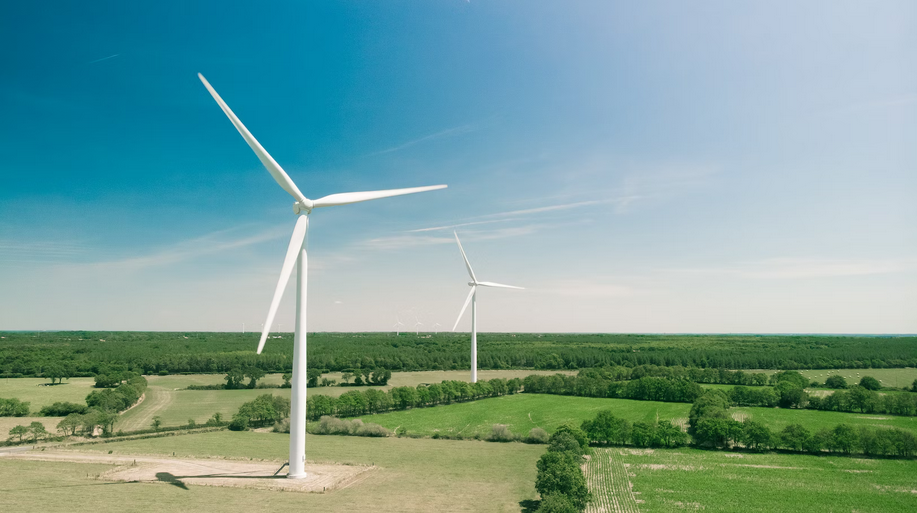
Imagine a world where clean, renewable energy flows freely through the air, effortlessly turning turbines and powering our homes, cities, and industries. Welcome to the magnificent realm of wind energy. In this captivating blog post, we embark on an exhilarating journey to unravel the awe-inspiring benefits that harnessing the power of wind brings forth. From slashing carbon emissions to creating jobs and revitalizing rural communities, join us as we delve into how this mighty force is shaping a greener future for generations to come. So buckle up, and let’s soar with the winds of change.
Clean and Renewable

Wind energy stands out as a clean and renewable energy source, contributing greatly to the reduction of greenhouse gas emissions. Unlike fossil fuels, wind power generation produces minimal air and water pollution. By displacing traditional fossil fuel-based electricity generation, wind energy plays a crucial role in mitigating climate change and promoting a more sustainable energy future.
Abundant Resource
The Earth’s surface is a vast expanse with different wind patterns, making wind energy an abundant and practically limitless resource. As technology continues to advance, the harnessing of wind energy becomes increasingly efficient. Wind turbines can be strategically placed in areas with consistent wind patterns, ensuring a steady and reliable source of power generation.
The abundance of wind energy presents an opportunity to diversify the global energy mix and reduce dependence on finite fossil fuel resources. This is evident by the fact that the Texas Wind Energy Association reports that wind power in Texas produced 15,000 megawatts of energy in 2019 and accounted for nearly 20% of the state’s electricity generation.
Job Creation and Economic Growth
The development and maintenance of wind farms create employment opportunities and contribute to economic growth, particularly in rural areas. From manufacturing and installation to ongoing maintenance and support services, the wind energy sector fosters job creation along its entire value chain. The economic benefits extend to local communities, providing a stimulus for businesses and infrastructure development.
Energy Independence
Wind energy contributes to enhancing energy security and independence by reducing reliance on imported fossil fuels. Nations with substantial wind energy capacity can diversify their energy portfolios, minimizing the geopolitical and economic vulnerabilities associated with dependence on foreign energy sources. Wind power’s ability to generate electricity domestically strengthens a country’s energy resilience and fosters a more secure energy future.
Land Use Efficiency
Compared to some traditional forms of energy generation, wind farms have a relatively low impact on land use. Wind turbines occupy only a small footprint, allowing the surrounding land to remain available for other purposes such as agriculture or conservation. Proper site selection and environmental impact assessments are essential to minimize any potential ecological disruptions, ensuring that wind energy development coexists harmoniously with local ecosystems.
Low Operating Costs

Wind energy has witnessed a significant reduction in operating costs over the years, making it increasingly competitive in the energy market. The advancements in turbine technology, improved manufacturing processes, and economies of scale have contributed to lower production and maintenance costs. This cost-effectiveness positions wind energy as a competitive alternative to conventional energy sources, enhancing its attractiveness for both investors and consumers.
Potential Environmental Impacts
While wind energy is generally considered environmentally friendly, it is not without potential impacts. Concerns related to bird and bat collisions, noise pollution, and visual aesthetics have been raised. Ongoing research and technological innovations are addressing these concerns. For instance, newer turbine designs incorporate bird-friendly features, and research is exploring ways to minimize the impact on wildlife while maximizing energy generation.
Technological Advancements
The continuous advancement of wind turbine technology is transforming the landscape of wind energy. From larger and more efficient turbines to innovations in energy storage and grid integration, technological developments are enhancing the performance and reliability of wind energy systems. These advancements contribute to the overall sustainability and competitiveness of wind energy as a mainstream power source.
As the world seeks to transition towards a more sustainable energy future, the benefits and potential impacts of wind energy make it a key player in the global energy mix. From mitigating climate change and fostering economic growth to promoting energy independence and technological advancements, the wind energy sector holds promise for a cleaner and more resilient world. Addressing environmental concerns and continuing research and development efforts will further solidify wind energy’s role in shaping a sustainable energy landscape.

